JUST IN CASE you missed the release party, Beyond Meat started rolling out a new version of their Beyond Burger earlier this month.
Beyond Meat press materials called the “next iteration of the brand’s iconic” burger “highly anticipated,” and they’re correct because this thing is literally all anyone has been talking about in the last 12 months of boooooorring.
As a frequent sampler of faux-teins, I only somewhat reluctantly enlisted to try the new Beyond Burger. Unlike Impossible Food’s soy burger with good marketing, I’ve actually kind of enjoyed the flavor of Beyond Meat’s products in the past. Their old burger wasn’t bad, from what I remember of it a few years back, and their “sausage” products have a decent snap.

And I was curious, as the newness of so-called “plant-based” meat-like products fades, what will big brands like Beyond Meat do to lure in new customers and re-engage old ones?
The answer, at least for BM (did they ever consider their company abbreviation?), seems to be … not much?
They’ve dropped mung bean protein from the ingredients list, added some B vitamins, nudged the calories-per-burger down from 270 to 230, and reduced the total fat content from 20 grams to 14 grams.
That’s the under-the-hood stuff, though.
Allow Dariush Ajami, Beyond Meat’s Chief Innovation Officer to get you all jazzed up: “We are continuously working on understanding beef flavor at a deeper level to ensure our plant-based beef platform delivers a delicious and satisfying sensory experience,” he says in a company press release. “The new Beyond Burger’s rich flavor profile resembles that of ground beef, and extensive testing with our consumers validated this new flavor direction with likeability scoring on-par with 80/20 ground beef burgers.”
So how does this new “plant-based beef platform” deliver on nutrition and a “satisfying sensory experience?”
Let’s review.
What’s Inside the New Beyond Meat Beyond Burger?
The ingredients list on their website reads as follows.
Water, Pea Protein, Expeller Pressed Canola Oil, Refined Coconut Oil, Rice Protein, Natural Flavors, Dried Yeast, Cocoa Butter, Methylcellulose, Contains 1% or Less: Potato Starch, Salt, Potassium Chloride, Beet Juice Color, Apple Extract, Pomegranate Concentrate, Sunflower Lecithin, Vinegar, Lemon Juice Concentrate, Vitamins and Minerals (zinc sulfate, niacinamide [vitamin B3], pyridoxine hydrochloride [vitamin B6], cyanocobalamin [vitamin B12], calcium pantothenate)
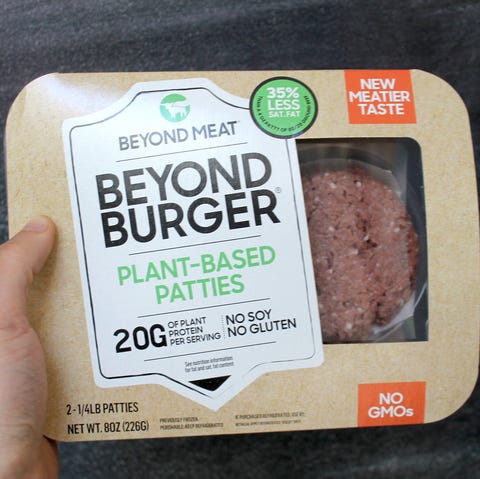
So you have a peas and rice providing the protein, coconut oil and cocoa butter lending the fat, and then a bunch of other stuff to make a Beyond Burger look and taste more like real beef, while also keeping the total fat and saturated fat lower. (That last part seems especially important to Beyond Meat, but more on that later.)
What Is the Nutrition of the New Beyond Meat Beyond Burger?
Here it is all in one place. The nutrition for the new Beyond Burger is as follows…
Per 1 patty (4 oz, 113 grams): 230 calories, 20g protein, 7g carbs (2g fiber), 14g fat (5g saturated fat)
If you want to compare that to an Impossible Foods Burger…
Per 1 patty (4 oz, 113 grams): 240 calories, 19g protein, 9g carbs (3g fiber), 14g fat (8g saturated fat)
And if you want to compare that to a 80/20 ground beef patty, which Beyond Meat and Impossible Foods love to do…
Per 1 4 oz cooked patty (yield from 142 grams): 307 calories, 29g protein, 20g total fat (7.66g saturated fat)
So, it seems, Beyond Meat can now argue that its plant-based burger has fewer calories and saturated fat, as well as more protein, than the Impossible Burger. And Beyond Meat can also advertise that their new burger has fewer calories and less saturated fat, which they do explicitly on the product packaging: “35% less sat. fat than a 4 oz patty of 80/20 ground beef.”
This statement seems true, and I’ll spare you an explanation of moisture-loss calculations, as I ran these numbers by Men’s Health‘s Research Chief (who is much better at moisture-loss calculations than I though they “haunt [her] dreams,” she says).
So all this then may cause you to ask yourself an important question…
Is the New Beyond Meat Beyond Burger Healthy?
Who knows?
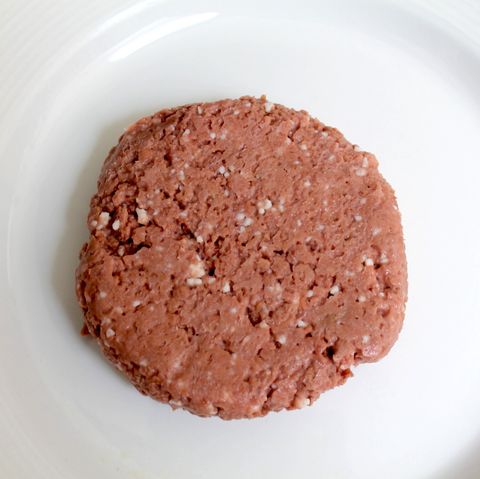
We at Men’s Health have been following the plant-based trend since it began to sprout in the mid 2010s. As the Food and Nutrition Editor at the brand, I’ve talked to a dozen credentialed M.D.s, Ph.D.s, and R.D.s on the topic. Heck, I’ve even written the introduction to a Men’s Health plant-based eating book.
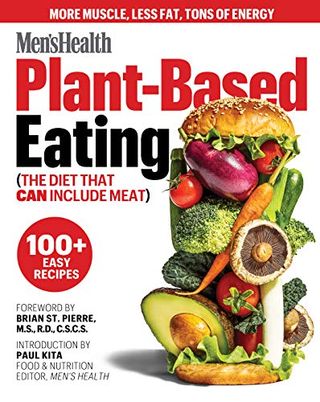
The consensus among all these experts—including even some who promote plant-based diets—seems to be that we just don’t know what effect, if any, processed plant-based meat alternatives have on the human diet. The field is still new and there’s scant research stating the health benefits of a diet that includes these products.
Now, Beyond Meat is quick to cite that there is research—Stanford-backed research—published in The American Journal of Clinical Nutrition, which found that study participants who swapped animal-based meat with Beyond Meat’s plant-based meat over an 8-week period improved their cholesterol levels (including LDL), heart disease risk factors, and body weight.
Except that this study was “supported by a research gift from Beyond Meat Inc.”
Do “research gifts” influence study outcomes? It’s a charge that the makers of a certain pro-vegan movie level at the meat industry, and researchers (including the study co-author of the Beyond Meat study defend).
But even giving the benefit of the doubt to the Stanford study, experts agree there isn’t yet a significant amount of good scientific research to prove that meat amalgams are healthy—or that they’re not. Where the bulk of that research does exist is in eating more real, unprocessed fruits and vegetables.
Okay, well what about saturated fat?
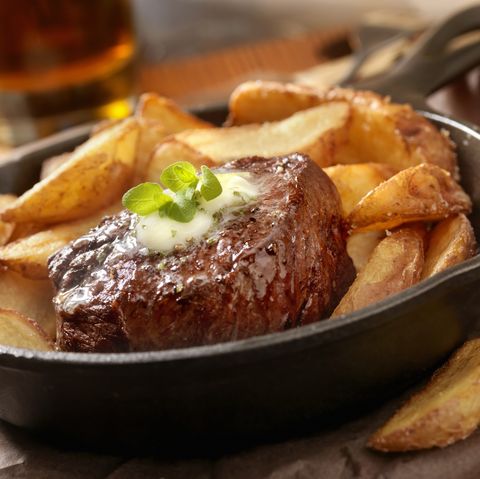
Beyond Meat has made “less saturated fat” a major piece of its marketing. In fact, later this year, the company will introduce a second Beyond Burger patty option with half the saturated fat of 80/20 beef.
But here’s the problem: Saturated fat may be an overblown health concern.
According to the Dietary Guidelines for Americans 2020-2025 people should limit their saturated fat intake to less than 10 percent of their total daily calories.
As we reported in our investigation on saturated fat early this year: “10 percent saturated fat in a diet of whole foods isn’t all that limiting—something like three eggs, two slices of bacon, a serving of full-fat Greek yogurt, and a broiled six-ounce New York strip topped with a pat of butter and washed down with a glass of whole milk in one day.”
Plus, just 28 percent of the saturated fat the average American eats comes from proteins and dairy, such as a piece of meat or glass of milk. Sixty percent of it comes from multi-ingredient foods, such as ice cream or pizza.
If all this plant-based “meat” stuff conjures up memories of low-fat Snackwell’s cookies and Skinny Girl low-carb salad dressings, you’re not alone.
As I peeled away the packaging of the new Beyond Meat Beyond Burger, I was wondering just what, exactly, I was about to put into my body, but also how one food that tries so damn hard to mimic another another food could possibly taste.
How Does the New Beyond Meat Beyond Burger Taste?
Pretty good!
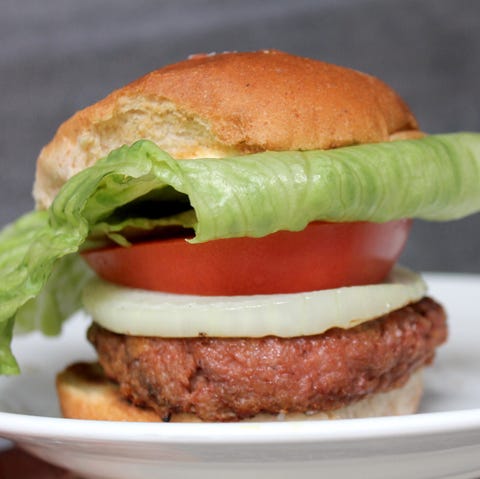
Modern food engineering is capable of great feats, and the new Beyond Burger is no exception.
In order to control for flavors of influence, I constructed my burger in accordance with the only right way to grill a burger, though following the package instructions of the Beyond Burger on cook times.
The result was a fauxtein patty with a char that resembled a beef burger, particularly around the circumference, where singed bits resided.

I had seasoned the patty aggressively with Kosher salt (as one does when cooking a beef burger), only to later learn that the Beyond Burger comes pre-seasoned.
I actually think that the extra salt brought out the greater savoriness of the burger. There’s an initial burst of something meat-like, which is delightful in a way that most veggie burgers are not, but then the flavor fades in a way that beef doesn’t.
Of the plant-based patties I’ve tried, they all seem unable to figure out the fat piece of the puzzle. Beef fat leaves behind a rich, almost-creamy texture. Fake beef fat leaves behind an oily residue, similar to that of coconut milk, that lingers too long. It’s not a flavor-killer; more like an eating annoyance.
Unlike crummy beef burgers, the new Beyond Burger did not leave me feeling greasy and bloated. Yet unlike well-made burgers made from well-raised beef, the Beyond Burger did leave me feeling slightly unsatisfied.
Not unlike, in a way, eating a Snackwell’s cookie.
Source: Read Full Article
